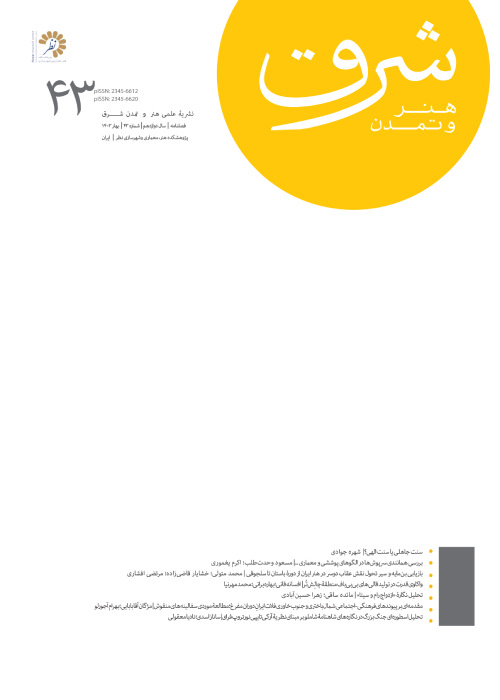Introduction and Symbolic Snalysis of Pateh Motifs of Kerman
Embroidery of Pateh is one of the decorative-applied arts that has been common among Zoroastrian women in Kerman since ancient times and has been considered a special and popular art. Even today, Pateh can be seen in decorating all kinds of decorative and functional items, which has become a reason for the spread of this art among the people. In the present research, an attempt was made to introduce, decipher and eliminate the existing ambiguities in the field of original and new motifs of Kerman’s Pateh by identifying the motifs and their symbolism. The article is applied in terms of purpose and descriptive-analytical in quality. Data collection was done in the form of library (documentary) and field studies (face-to-face conversations with experts, including: tailor, mender and seller of Pateh). From the statistical population, 21 types of Pateh motifs were analyzed in the form of a table. In the division of Pateh motifs, three main categories and each of them including smaller divisions can be named: 1- Plant 2- Geometric and abstract 3- Birds. Some motifs have been common in the past, such as cypress, but some have been used in modern times, including bats. The above-mentioned motifs are often symbolic (cypress tree symbolizes immortality, bergamot symbolizes the movement towards the initial perfection) but some motifs are taken only from nature and sometimes mentally, or are not known until now, such as: (flowers and roses that are used to fill the background space). Handicrafts in each period are a representation of the beliefs, tastes, thoughts, and culture of that period that by examining art and culture, one can realize the specific characteristics of each in different periods. Accordingly, Kerman’s Pateh embroidery is considered to be the most original art of this region due to its antiquity, and its motifs and drawings are a reflection of the ancient Zoroastrian culture.
- حق عضویت دریافتی صرف حمایت از نشریات عضو و نگهداری، تکمیل و توسعه مگیران میشود.
- پرداخت حق اشتراک و دانلود مقالات اجازه بازنشر آن در سایر رسانههای چاپی و دیجیتال را به کاربر نمیدهد.


